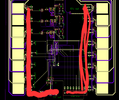Follow along with the video below to see how to install our site as a web app on your home screen.
Note: This feature may not be available in some browsers.
I'm confused about your last paragraph. Are you saying I'm not responsible for damage to Mosfets on the current project but I will be responsible for damages on his next project that uses Mosfets? Or do you mean something else? And, are we assuming he tests the continuity as I advised or that he doesn't remember to test continuity? And, will I be responsible for ANY damaged Mosfets no matter how they are damaged or only if he has the unique requirement of mounting multiple Mosfet thermal tabs to the same heat sink? Please advise, then I'll answer your question about taking responsibility for MrDeb's actions.ZipZapOuch I guess you are unable to admit you're wrong even in light of overwhelming evidence. *Shrug* Perhaps you should stop picking fights.
If MrDEB follows your advice, will you take responsibility if the MOSFETs he uses next time don't exhibit the same rare property of an isolated tab? If indeed the current ones do (hint, they won't)?
I want to AVOID ANY HEAT. HERE IS MY PRELIMINARY BOARD .
This has to be the most difficult board I have done. Had net connection issues.
I need to add/change labels.
I want to AVOID ANY HEAT.
The CHECK NET CONNECTIONS says everything is good but will verify.
For example, these ground connections appear not to be made. You have a number a number of identical blocks. Draw one. Make it neat and clean, no jaggy lines or lines across components, and verify every connection. Then duplicate it however many times you need to.
View attachment 145144
You are almost certainly wrong, the connections look sound - just very poorly drawn.
With an enclosure, there is no convection air flow so those thermal resistances values I quoted will likely double and that was before you added another heat source, the transformer instead of a power jack and external DC. It's not a lot of power, but it's not a good way to reduce temperature rise. It could be vented a metal enclosure.will look at the suggested corrections. The CHECK NET CONNECTIONS says everything is good but will verify.
As for the trace width, I need to poor over and increase suggested traces.
Have yet to add the bottom heat sinks.
As for the generation of heat etc. the enclosure is basically a sealed enclosure and the 12v 5W transformer is in same enclosure. Looking at attaching an aluminium grate to top of enclosure for cooling issues?

The ground is connected to the top and bottom pours.
